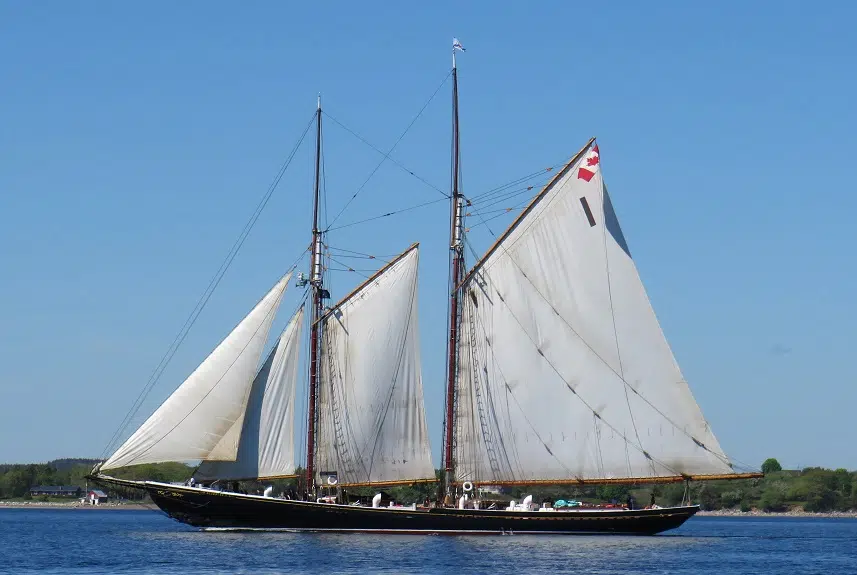
Bluenose II
The Pride of Nova Scotia is sporting some new threads thanks to a Lunenburg sailmaker.
The Bluenose II was built in 1963 after the original Bluenose sailed the path to fame as both a racing and fishing vessel in the 1920’s and 30’s before hitting a reef in Haiti in 1946. Its familiar image is also engraved on the Canadian dime.
Michele Stevens Sailloft Ltd. was awarded the contract to replace the Mainsail, the Fore, the Jumbo and the Outer Jib sails last November and she and her team of five completed the project this month.
This isn’t the first time Stevens has worked on the Bluenose II sails-as a 4th generation sailmaker you might even say it comes naturally to her. Her Great-grandfather, Grandfather and Father all worked on the sails of the Bluenose and Bluenose II.
The original family business was sold in 1985 but she is fortunate to be working in the same sailloft her Great-Grandfather did. He moved his family from Tancook Island to Second Peninsula in 1920. In business since 1994, this is the second time she has done work on the Bluenose II sails; In 2005 she replaced the main and fore sails.
The project was rewarding but had its challenges.
“It wasn’t making them, it was the sheer size of the sails that was a challenge. The mainsail at 4100 square feet is the largest working gaff mainsail in the world and it is three times the size of our loft. We have to use the community centre to lay out the pieces because it is the only place large enough,” she said.
Captain Phil Watson has been on ship since 1987 and has served as Captain since 2001. He says that the ship represents the history of Nova Scotia and not just the fishing industry but everything it took to get a schooner going.
“Foresters, blacksmiths, sawmills, you needed whole communities to keep the boat going. She represented Canada well in the racing world, she is the pride of Nova Scotia.”
Watson said that the sails are so large that they used to have to be laid out on the ice or in a field to work on. Sails generally last 15-20 years depending on how much exposure they get to the sun which is what breaks it down eventually. Although they would have been made of canvas long ago the sails are now made of a polyester material called Dacron.
“It is a big project, it takes a sailloft about 5-6 months to do the job and sails have to be strong to withstand the conditions. In my time I have seen winds of 50,60,100 knots on the Bluenose. I don’t choose to be out there in that but sometimes you get caught,” said Watson.
The ship is currently still in its winter wrap because of delays in the season start due to the pandemic. Crew normally show up April 1 to begin training with a target date of setting sail June 1.
“We’re like everybody else, just waiting for Dr. Strang to give the go ahead,” said Watson.








